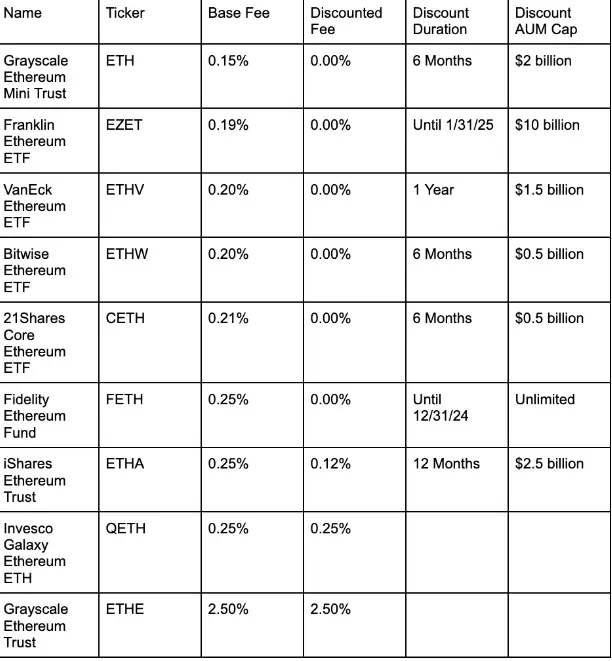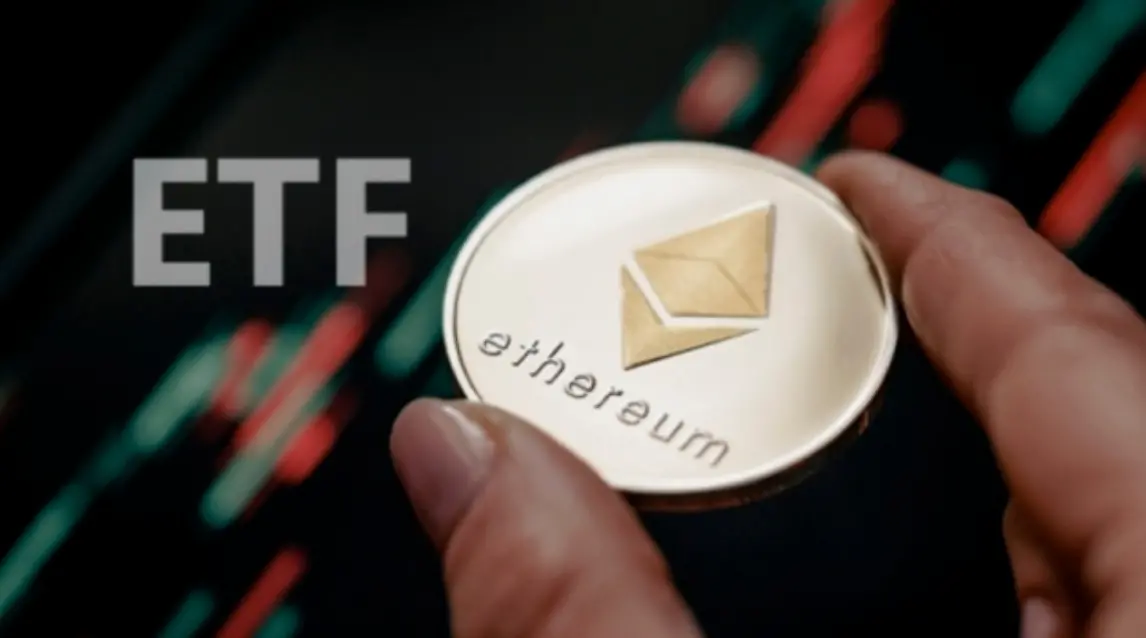Where to buy? Which one to buy? This article clarifies the upcoming Ethereum ETF for you
Original Title: Ethereum ETFs are coming --- Here's what you need to know
Original Author: ALEX O'DONNELL
Translation: Mars Finance, Eason
Are you ready for the launch of 9 spot Ethereum ETFs on July 23? Here’s what you need to know to get started trading.

After years of regulatory hurdles and countless revisions to registration documents, spot Ethereum exchange-traded funds (ETFs) are finally hitting the market.
Publicly traded Ethereum (ETH) ETF shares will debut alongside stocks like Apple Inc. (AAPL) and SPDR S&P 500 ETF Trust (SPY) on some of the most popular brokerage platforms in the U.S.
The highly anticipated launch marks a pivotal moment for the cryptocurrency market and presents an opportunity for millions of U.S. institutional and retail investors. Here’s what you need to know to make the most of it.
When will spot Ethereum ETFs be listed?
The Chicago Board Options Exchange (CBOE) has confirmed July 23 as the launch date for five ETFs trading on its platform: 21Shares Core Ethereum ETF, Fidelity Ethereum Fund, Invesco Galaxy Ethereum ETF, VanEck Ethereum ETF, and Franklin Ethereum ETF.
Four other spot ETH ETFs will trade on Nasdaq or the New York Stock Exchange (NYSE) Arca. While these exchanges have yet to issue official announcements, they are widely expected to list on July 23 as well.
Where can I buy Ethereum ETF shares?
The short answer: almost any major brokerage platform. Each of the ETH spot ETFs launching in the last week of July has received regulatory approval to trade on at least one major U.S. exchange—specifically, Nasdaq, NYSE Arca, or Cboe BZX.
Retail investors do not trade directly on these exchanges. Instead, they rely on brokerage platforms (such as well-known brands like Fidelity, E*TRADE, Robinhood, Charles Schwab, and TD Ameritrade) as intermediaries.
Once ETH ETF shares are listed on public exchanges, all major brokerages and other institutions are expected to facilitate trading.
What are my options and how do I know which is best?
Nine spot Ethereum ETFs are set to begin trading. In terms of underlying mechanics, these funds are nearly identical. Each ETF is sponsored by reputable fund managers, holds spot ETH through qualified custodians, and relies on a group of core professional market makers to create and redeem shares. They also enjoy the same standard investor protections, including insurance against broker bankruptcy and cybersecurity risks.
For most investors, the deciding factor comes down to fees. Eight of the nine ETFs have management fees ranging from 0.15% to 0.25%. The only exception is the Grayscale Ethereum Trust (ETHE), which has been trading under a different fund structure since 2017 but still has a management fee of 2.5%.

Comparison of the first nine spot Ethereum ETFs
Most (but not all) Ethereum ETFs are temporarily waiving or reducing fees to attract investors. Greyscale Ethereum Trust again stands out in this field, tied with Invesco Galaxy Ethereum ETF (QETH).
Ironically, the clear leader in the fee race is also a Grayscale product. The Grayscale Ethereum Mini Trust (ETH) is a new fund created specifically to be listed as an ETF, with a management fee of just 0.15%. These fees will be completely waived for the first six months after listing or until the fund's assets under management (AUM) reach $2 billion.
Another notable option is Franklin Templeton's Franklin Ethereum ETF (EZET). With a management fee of 0.19%, it has the second-lowest fee among its peers, and these fees will be fully waived until January 2025 or until the fund's AUM reaches $10 billion.
Will spot Ethereum ETFs offer staking services?
The short answer is "no." The longer answer is: "maybe, but not anytime soon."
To recap, staking involves depositing ETH into validator nodes on the Ethereum Beacon Chain. Staked ETH can earn a share of network fees and other rewards, but it can also be "slashed"—or have its staked collateral confiscated—if validators misbehave or fail.
Staking is attractive because it can significantly enhance returns. According to StakingRewards.com, as of July 19, the annualized yield is approximately 3.7%.
Earlier this year, several issuers, including Fidelity, BlackRock, and Franklin Templeton, sought regulatory approval to add staking features to spot ETH ETFs. The SEC rejected these requests.
According to several anonymous sources familiar with the negotiations, the issue boils down to liquidity. Staked ETH typically takes several days to withdraw from the Beacon Chain. This poses a problem for issuers, as they need to redeem ETF shares in a timely manner to access the underlying fund assets.
Insiders told Cointelegraph that issuers are still exploring ways to add staking features to existing ETH spot ETFs—potentially by maintaining a "buffer" of liquid spot ETH—but viable plans are still months away. For now, ETH ETFs will not offer staking.










